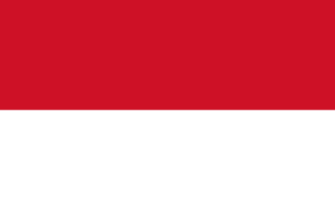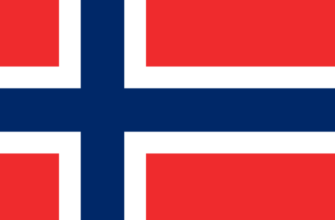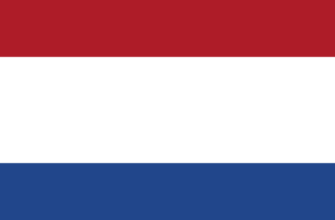
Albania is a small state on the Balkan Peninsula, which is not mentioned very often. All the more interesting is which flag represents this country.
History of the flag
The first mention of the Albanian flag dates back to the 15th century. The Albanian George Kastriot, who later became a national hero due to his fight against the Turks, used the image of a double-headed black eagle on his banners. In some variations, a helmet was depicted above the eagle (which still remains on the country’s coat of arms).
In 1912 Albania gained independence from the Ottoman Empire and became an independent state. A black eagle began to be depicted on the red cloth. Throughout the 20th century, various elements (imperial crown, communist five-pointed star, hammer and sickle) were added to this image, which was associated with various events and the current politics of the country at that time.
-

Flag of Albania 1912-1914 -

Flag of Albania 1914-1920 -

1917-1918 (Autonomous Albanian Republic of Korca (occupied by France)) -

Flag of Albania 20.01.1920 — 08.08.1929 -

Flag of Albania 08.08.1929 — 1934 -

Flag of Albania 1934 — 03.06.1939 -

Flag of Albania 03.06.1939 — 20.10.1943 (flag of Albania under the Italian occupation) -

03.06.1939 — 20.10.1943 (flag of the Viceroy of the Italian King) -

20.10.1943 — 10.10.1944 -

10.10.1944 — 07.03.1946 -

07.03.1946 — 07.04.1992
In April 1992, the flag took its current form.
Description of the flag of Albania
The flag of Albania is traditionally presented as an image of a black double-headed eagle on a dark red cloth, which is shaped as a standard rectangle with an aspect ratio of 5:7. There is also a version with a communist star (obsolete) or helmet (popular) above the eagle. The Albanian flag and coat of arms are virtually indistinguishable from each other.
Flag colors
As mentioned, the flag only has a shade of red (which is officially approved in CMYK format) and standard black.
Meaning
The colors of the flag of Albania have no relation to heraldic meanings, although it is often argued that the red background traditionally denotes the blood spilled by Albanians for their freedom. But above all, in this case, the colors are due to the history of the country’s creation. The red color of the cloth denotes bravery, courage, strength and honor of the people of Albania, and the readiness to defend their freedom.
As for the black eagle, it was the symbol of the 15th-century national hero George Kastriot (Skanderbeg), who united the Albanian people into a single state and successfully defended its independence, personally participating in all battles. The army under his leadership won all kinds of victories of any complexity and prevented the seizure of the Albanian lands by the Turks. It is his helmet that is sometimes depicted above the eagle and is still fixed on the coat of arms of the state. There are two versions about the origin of the eagle on the coat of arms of Skanderbeg.
One of them is legendary — it says that all Albanians are descended from mountain eagles, and the ruler of the country is a direct descendant of the leader of the flock. This is the basis of the plot of the majority of Albanian folk tales. And the name of the country in the Albanian language sounds like «Shkiperiya. Translated into Russian it means: «country of eagles».
The second version is more likely: the Albanians adopted the eagle from the Byzantines, because it was on the emblem of the Byzantine Empire.
The flag of Albania is an image of a black eagle on a dark red cloth. The choice of such symbols is due to the difficult history of the Albanian state.
General information about Albania
| Official language | Albanian |
| Capital | Tirana |
| Territory | 28,748 km2 |
| 2,876,591 people | |
| Currency | lek |
| Phone Code | +355 |










Как Григорий, хотел бы отметить, что флаг Албании с черным орлом на красном фоне символизирует силу и независимость страны. Этот флаг, обладающий богатой историей, олицетворяет дух албанского народа. Красный цвет символизирует мужество и храбрость, а черный орел — величие и свободу. Интересно, как флаг стал не просто национальным символом, но и важной частью идентичности и культуры Албании.
Как мужчина, могу сказать, что мне тоже близка мысль о том, как символы влияют на самоощущение народа. Когда я служил в армии, наш флаг всегда вдохновлял команду — это не просто ткань, а дух и история, которые объединяют нас.
Я хочу поделиться интересным моментом. Когда я ездил в Албанию, заметил флаг повсюду. Он такой яркий и запоминающийся! Люди гордятся своей символикой. Мне это напомнило о важности культурных традиций и национальной идентичности.
I visited Albania last year and saw the national flag everywhere! The red and black colors are bold and represent bravery and strength. It was fascinating to learn about its history and the significance of the double-headed eagle. Such a proud symbol of their culture!
Paul here (he/him) — as a vexillologist I geek out over Albania’s double-headed eagle and bold red field. Saw it waving at a festival once; the symbolism and contrast are pure design gold. Total flag crush!
Seeing the Albanian flag always reminds me of the amazing trip I took to Tirana. The red and black colors stood out everywhere, making the vibe so unique. Grateful for that experience and the warm people I met along the way!
As a woman who visited Albania last summer, I was blown away by how proud everyone is of their red and black flag. At a local festival, I saw the flag everywhere—on clothes, tents, even painted faces. It really shows how a simple design can unite a whole country.